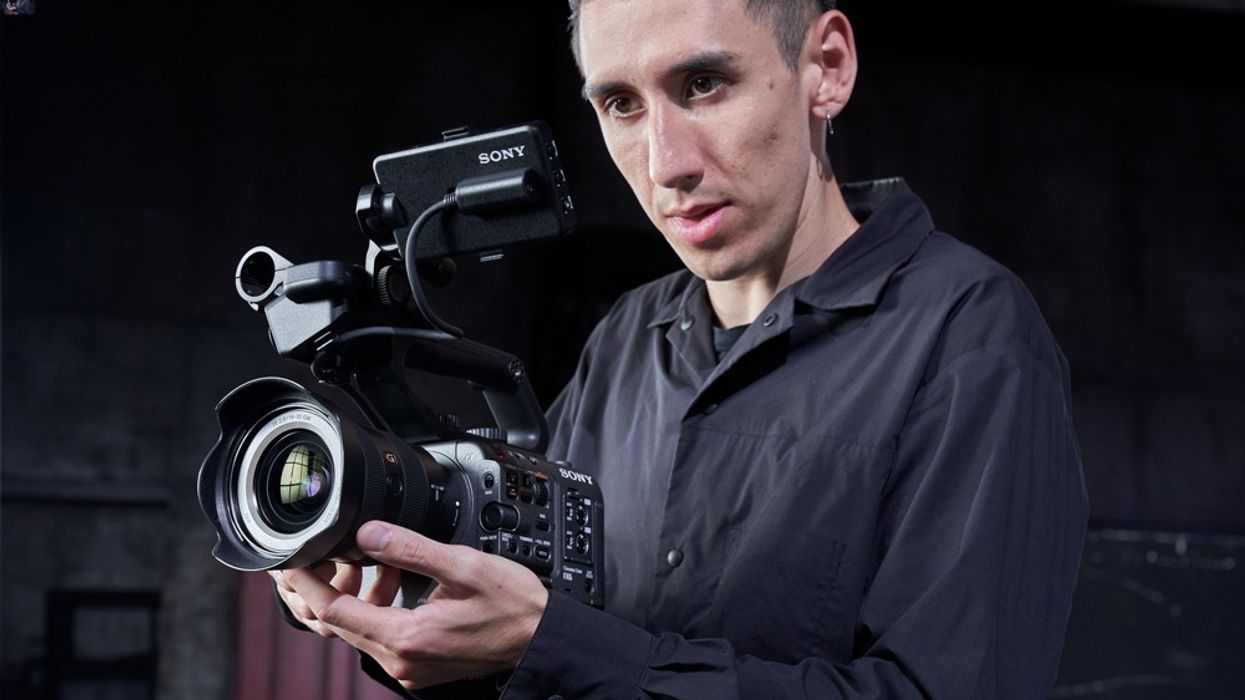5 Scenarios When Autofocus Is Better Than Manual Focus
Tips for when autofocus might be the better option for tackling sharp images.

For those first starting out in digital video production, or even if you're a seasoned pro, there's no harm in powering up your camera and turning all the settings to full auto for a shoot. However, to truly grow as a filmmaker, videographer, or documentarian, the auto setting will only take you so far.
As you develop your skills and understanding of visual imagery and how you can manipulate it to subliminally affect the story you are telling, you’re going to want to switch many of those settings off of auto and into manual control. We’re talking about shutter speed, aperture, and ISO.
But here’s one feature you might want to consider leaving on auto during certain situations, and that is focus.
Autofocus technology has come a long way, and just in the last few years, we've seen giant leaps in face tracking and low light level autofocus performance, especially when talking about Sony cameras.
The Sony Cinema Line includes VENICE, the FX9, FX6, and FX3. The FX series cameras all have Sony's robust Hybrid AF that combines phase detection AF and contrast-detection AF for some of the best speed and precision on the market.
Here are five situations when autofocus can be better than manual focus.

Thanks in part to major technological breakthroughs from digital video cameras from manufacturers like Sony, producing, shooting, and editing video footage for a myriad of purposes is now easier than ever. And with all that ease-of-use, it certainly opens the door for many video professionals to operate as a solo operator, or a “one-man-band” as the saying goes.
If you find yourself out on a shoot by yourself, one of your first tricks for ensuring quality is to eliminate the amount of work you’ll have to do manually. Without working with a DP, camera operator, or focus puller, using autofocus can be a great way to make sure your video footage looks exactly how you want it.
The Sony FX3 is a great camera for shooting solo, and we would highly recommend it for its high-precision touchscreen AF and high-speed readout capabilities. With the right setup, setting AF can be as simple as a touch of the screen, leaving you free to wrestle with everything else from lighting to audio to direction.
2. Shooting Documentary B-Roll
Documentary filmmaking is another great example of a time when autofocus can be advantageous over manual shooting. This specifically is true when working with documentary B-roll footage which, by its nature, can both be chaotic and hard to capture. Just watch a few Vice Guides for examples of some of the precarious situations documentary videographers can find themselves in.
Having a strong documentary camera like the Sony FX6 with its 629-point focal plane phase detection AF can be a great tool for using intelligent tracking and on-sensor phase-detection to keep your subjects in focus no matter how wild a situation your shoot may call for.
3. Shooting Interview Footage
On the flip side, many corporate and commercial video professionals also often opt for autofocus over manual when shooting your standard interview and talking head productions.
Depending on the size of the client and team for productions like these, there can be a lot of budget put into making interviews look perfect. And while you can absolutely control elements like framing, lighting, and audio, focus can still be tricky—especially when you happen to have subjects who move around a bit as they speak.
That’s why, for the high-end interview production setups, a camera like the Sony FX9 might be your best bet for optimal focus performance. With the FX9’s enhanced Fast Hybrid AF, we’re talking about unprecedented speed, smoothness, and precision that will absolutely guarantee that even the most animated of interviewees won’t bounce out of focus on your important shoots.
4. Shooting Higher Resolution
Staying with the Sony Cinema Line, another reason to use autofocus on your shoots is simply because it works so much better with higher-resolution recording. Starting with the Sony FX3 and working your way up from the FX6 and to the FX9, these Sony cinema cameras are going to give you some of the best autofocus technology currently on the market.
With higher resolution to analyze, in many cases using autofocus is actually going to be much more precise and fine than many can achieve on their own using manual focus. This means crisper and clearer footage on all varieties of shoots from the chaotic to the tightly controlled.

Finally, autofocus isn’t only for seasoned video professionals. For many just starting or who are more focused on performances rather than production, having a smart and fast AF camera can be hugely helpful for vlogging or other self-shooting situations.
For everything from YouTubers to TikTok, vloggers and content creators often rely on autofocus to handle all their focusing needs with confidence while they can spend more time on their on-camera performances and roles.
Summary
At the end of the day, every film and video project is going to be different. Depending on your own preference, gear, and needs, it will really be up to you how you want to approach any shoot. And while there will undoubtedly be shoots where it makes more sense to shoot manual focus, having the understanding and skills to shoot with autofocus can be a huge plus in the right production situations. You might even find yourself leaving autofocus enabled the entire time.












